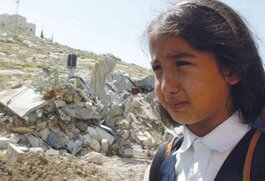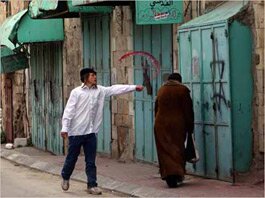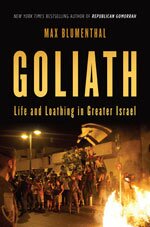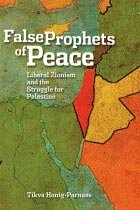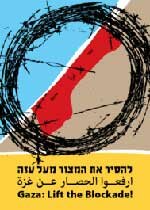Six governments preferred to encourage Israelis to go and live on settlements rather than in the periphery of the country. This had a critical effect on the level of supply in various regions, and therefore on the prices of real estate.
Search: Dror Etkes
[T]he truth is that the settlers know better than anyone else that not only did construction in settlements continue over the last 10 months, and vigorously, but also that a relatively large part of the houses were built on settlements that lie east of the separation fence.
The state has argued before the Supreme Court and the International Court of Justice in The Hague that the route of the separation barrier was based on Israel’s security needs. But Civil Administration’s maps and figures, disclosed here for the first time, suggest the barrier route was planned in accordance with the available land in the West Bank, intended to increase the area and population of the settlements.
Settlers from West Bank outposts have taken control of land in Area B and are thus in breach of the 1995 Oslo agreement between Israel and the Palestinians, says Dror Etkes, an anti-settlement activist. Area B was defined in the Oslo Accords as land under Palestinian civil control and Israeli military control.
Israel carried out a de facto annexation of Palestinian land northeast of the Jordan Valley and given it to Kibbutz Merav. Merav, part of the Religious Kibbutz Movement, is about seven kilometers northwest of the parcel. The route of the separation barrier in the area was changed so that the plot in question, about 1,500 dunams (375 acres), would be on the Israeli side.
For Israel’s housing protest to succeed, it must be defined as political – and it must be translated into political acts. The issues it raises must be placed at the center of Israel’s democratic life. The argument over who gets what must find expression within political parties and elections.
IOA Editor: This domestic Israeli (Jewish and largely middle-class) housing campaign is rapidly spreading and may well threaten the stability of Netanyahu’s government.
However, so far, demonstration activists and their leaders have dealt with the housing crisis outside of any political context. They didn’t discuss the dramatic discrepancy between Israel’s domestic and West Bank housing development policies, let alone make the connection between Israeli governments’ (past and present) high priory for settlement construction and low priority for domestic development – both designed to increase the size of the settlement population. Similarly, they didn’t include Israeli Palestinians — whose community has suffered a far greater housing shortage for decades — in their national campaign.
This ‘missing’ context is a true reflection of the extent of this Israeli-Jewish struggle. It is also likely to constrain the significance of any ‘success’ resulting from this campaign.
Inclusion of Jordan Valley, northern Dead Sea and area surrounding Ariel in ‘settlement blocs’ whose takeover the IDF Civil Administration is advancing, would prevent establishment of Palestinian state with territorial contiguity… Until now it was not known that the administration, which is a military agency, was charged with distinguishing between the blocs Israel is demanding to annex as part of a final-status agreement and the rest of the settlements.
According to Dror Etkes, who has been researching construction in the settlements for several years, at least 25 springs are undergoing development for tourism. “Access to these springs has been blocked to the Palestinians, and there are dozens of other springs that the settlers have marked as targets for takeover,” he says.
According to a June 2010 fact sheet on the USAID Internet site, last year American taxpayers funded the paving of 63 kilometers of asphalt roads in the West Bank.
A Haaretz investigation shows the state used a controversial law to transfer East Jerusalem assets to the rightist organizations Elad and Ateret Cohanim without a tender, and at very low prices.
IOA Editor: This is the full Haaretz report – an update of an earlier story. The previous story includes important background on Jewish settlement activities in Jerusalem
The Israel Lands Administration is transferring properties in the Silwan neighborhood and the Old City of Jerusalem to right-wing groups Elad and Ateret Cohanim for low prices, without issuing a tender as required by law, a Haaretz investigation has found.
IOA Editor: While the headline focuses on the least serious of the violations involved, the Haaretz investigation covers the Israeli government’s active involvement in the on-going takeover of East Jerusalem from its legitimate Palestinian residents (owners) to an illegal Israeli-Jewish control – in clear violation of international laws and conventions.
A rabbi from one of the most violent settlements in the West Bank was questioned on suspicion of incitement last week as Israeli police stepped up their investigation into a book in which he sanctions the killing of non-Jews, including children and babies.
Yesh Din: “Past experience” fed suspicions that the Bnei Menashe would be encouraged to settle deep in the West Bank… Shavei Israel lobbies for other groups of Jews to be brought to Israel, including communities in Spain, Portugal, Italy, South America, Russia, Poland and China.
IOA Editor: An endless supply of lost tribes, and their relatively disadvantaged members, can provide a lifeline of fresh, enthusiastic ‘pioneers’ to Israel’s settlement frontier.
According to data collected by… Yesh Din, and by… Peace Now, construction is being carried out in more than 50 settlements and in two other industrial zones – Mevo Huron and Gush Etzion.
Yesh Din, Palestinian village council head file petition to High Court of Justice demanding interim order against construction in nearby settlement on what they say is private Palestinian land be halted immediately.
[Israel’s] Attorney General Menahem Mazuz has told police to investigate workers from the Jewish Agency’s settlement division on suspicion of knowingly allocating private Palestinian land for construction in the settlement of Ofra, [Israeli television] Channel 2 reported on Friday.
The outposts are a continuation of the settlements by other means. The sharp distinction Israel makes between them is artificial. Every outpost is established with a direct connection to a mother settlement, with the clear aim of expanding the takeover of the territory and ensuring an Israeli hold on a wider tract of land. Construction in the outposts is integrated into the overall plan of the settlement project and is carried out in parallel to the seizure of lands within and close to the settlements…
Behind every settlement action there is a planning and thinking mind that has access to the state’s database and maps, and help from sympathetic officers serving in key positions in the IDF and the Civil Administration. The story is not in the settlers’ uncontrolled behavior, though there is evidence of this on some of the hilltops, but rather in conscious choices by the state to enforce very little of the law.
IOA Editor: Irrespective of Amos Harel’s assumption that the Obama administration is the enemy of Israel’s settlement project, which has yet to be evidenced by actions, this is an important update report on the status of on-going settlement activities, and on the historically tight relationship between the settler movement, all Israeli governments, and the IDF – a partnership which is a crucial ingredient for the success of Israel’s 42 year old colonial project in the West Bank.
Not just in the courts, but also on the ground, it is hard to see any real indication that the settlement enterprise is headed toward a freeze. Dror Etkes, the man behind the petitions, photographed construction in the outpost of Ali this week.
An important assessment of the realities of the West Bank settlement program, and why the Israeli Occupation is here to stay – unless Israel is forced otherwise.
West Bank construction has been accelerating for several months, putting Israel on a collision course with a U.S. administration taking a hard line on settlement expansion…
IOA Editor: The extent of this widely predicted “collision” remains to be seen.
Just four years ago, the defense establishment decided to carry out a seemingly elementary task: establish a comprehensive database on the settlements…














